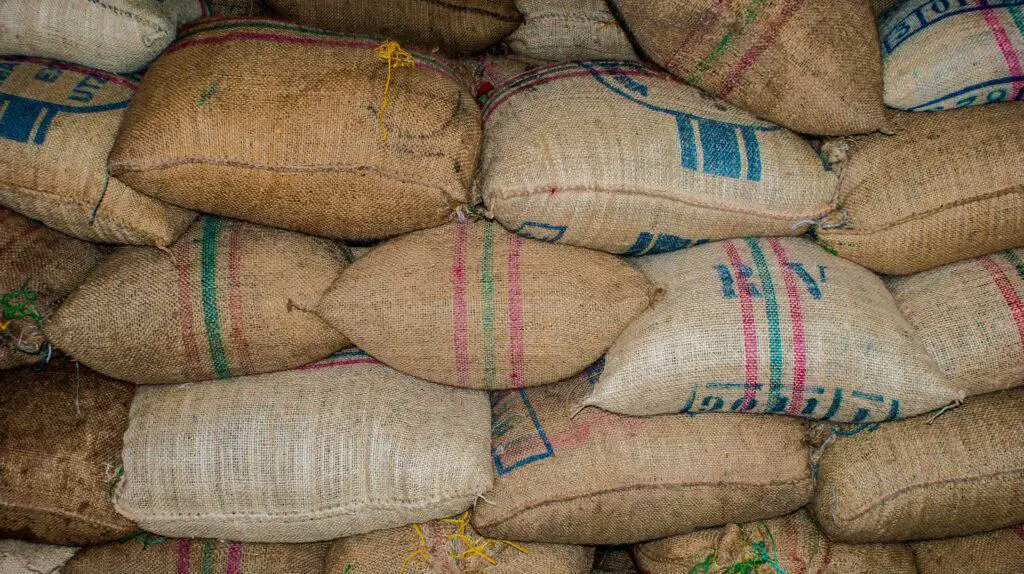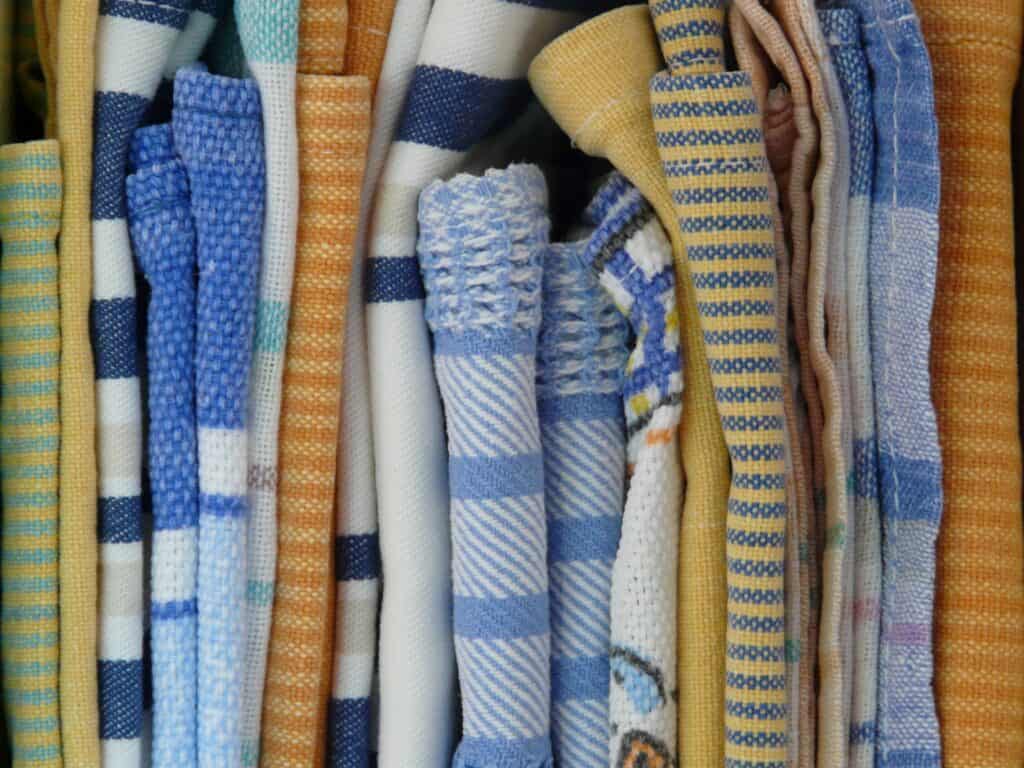For hundreds of years, flour sacks have been used for both functional and aesthetic purposes, but the dual use of these little sacks has been lost with time. Instead of tossing out old flour sacks, there are limitless options for using old sacks for functional and stylish purposes.
To learn about how people of the past have used flour sacks and how you can use them today, keep reading. This article fully dives into the dual purposes of the humble yet fantastic flour sack. We cover topics including the material flours sacks are made from, the history of flour sacks, and how you can use old flour sacks today.
Scroll down for more.
What Are Flour Sacks Made From?
Although small packages of flour are typically sold in some sort of paper material, large flour sacks are typically made from tightly woven cotton.
Cotton is the ideal material for flour sacks because they can be woven together so tightly that only minimal amounts of flour fall out. Not to mention, cotton is highly affordable. Because cotton can be woven tightly and is affordable in and of itself, cotton is the most economical material for flour sacks.

History Of Flour Sacks In Fashion And The Home
Back in the day, flour sacks served many purposes beyond simply containing flour. Because of the cotton material that the sacks were made from, they also served important functions for everyday homemakers. They were used as towels and fashionable clothes.
Flour Sacks In the 1800s
In the 1800s, cotton bags were pretty plain. As a result, the plain bags were often cut into chunks and used as dish towels, tea towels, and other similar items. These items were almost exclusively used for functional purposes since their plain designs didn’t make them stylish.
A Change In Sales In the 1920s
Even into the 20th century, flour sacks were still being used for functional purposes. However, it seemed that all that would change in the year 1922. During this year, millers started transitioning from cotton sacks to paper cartons for convenience purposes.
Flour Sacks Made A Comeback Shortly After
Even though hope for flour sacks seemed lost, they quickly made a comeback in 1924, just two years after, because of one man.
Asa T. Bales decided to start making flour sacks from cotton again. What made them different from the flour sacks of the past is that the sacks were also made with interesting patterns. The purpose of this design was for the flour stacks to be turned into clothing after use, which would ideally increase sales.
Printed Flour Sacks Revolutionized Fashion
Mr. Bales’ idea not only succeeded for his company, but it inspired other millers to follow suit and put interesting patterns on their flour sacks. Consequently, housewives around the nation were creating their own stylish clothes from these old flour sacks.
In fact, flour sack clothing, especially flour sack dresses, became popular during the Great Depression and World War Two when money and items were tight. In many ways, these flour sack dresses provided a bit of color in these otherwise gloomy decades.
Even after World War Two ended, flour sack clothing was still very popular. Flour sack dresses were especially in style well into the 1960s.

Flour Sack Dresses Today
Today, flour sack dresses are not very popular, but their style is not lost in our culture. Even though people today don’t wear literal flour sack dresses, many popular dress styles are inspired by the cotton flour sack dresses of the past century.
How Can I Use Old Flour Sacks?
Just like savvy homemakers of the past, you can use old flour sacks for a number of purposes. Everything from tea towels to unique crafts can make use of these old flour sacks in an affordable and environmentally-friendly way. Here are some of the top ideas for reusing your old flour sacks:
Tea Towels
One of the most convenient ways to use old flour sacks is to turn them into tea towels. Tea towels and flour sack towels are identical because they use the same material and have the same benefits. Both of these towel types are made from thin cotton, which makes them absorbent, all-natural, and lint-free. In other words, a flour sack is the exact same as a tea towel.
If you aren’t very crafty, you can simply cut up the flour sack to make simple but efficient tea towels. You can also decorate the cut-up tea towels to have fashionable hand towels for your home. There are tons of patterns and ideas online that you can use to get inspired.

Clothes
Just like the housewives from the 20th century, you can use old flour sacks as clothing material. Of course, it will require a bit of sewing knowledge in order to do this effectively and fashionably. You can find a number of patterns online for transforming old flour sacks into clothing.
Décor
If you don’t have any functional needs for old flour sacks, you can use them for purely aesthetic purposes as well. There are tons of ways to use flour sacks as décor, such as by creating antique displays in your home or turning them into pillows.
Crafts
As though there weren’t already a ton of uses for your old flour sacks, you can even turn them into craft projects. People have been known to turn old flour sacks into pillows, ottomans, ornaments, and a number of other craft items.
Versatile Bags
At the very least, you can keep old flour sacks and use them as versatile bags when needed. For example, they can be reusable bags when shopping or hold old laundry. With this idea, you don’t even need to change the bag in any way. Just toss it into the washer before use!
Final Thoughts
Learn from the homemakers of the past and put your old flour sacks to use. You can be like the home makers of the 1800s and use them as tea towels, or you can use them as fashion statements like the women of the 20th century. Either way, don’t just throw out these versatile tools since they can be used for many purposes and save you money in the process!
